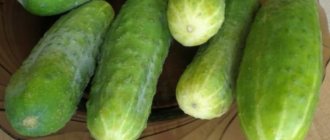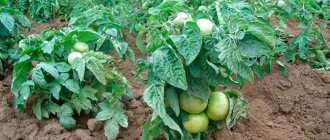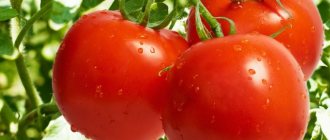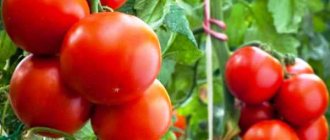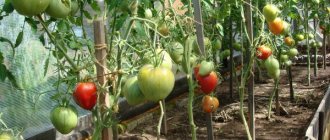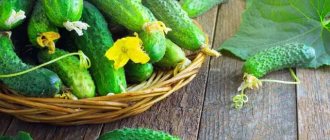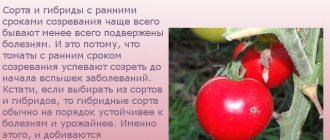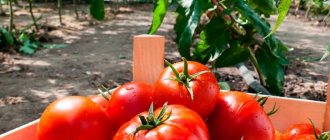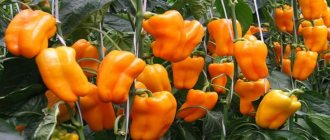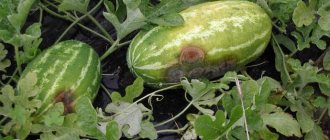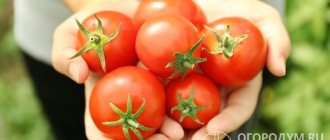Author's rating
Author of the article
Yakov Pavlovich
Professor, Head of the Department of Vegetable Growing
Articles written
153
Every year new varieties and hybrids of cucumbers appear. Breeders are working to develop varieties that are early maturing, productive, and resistant to diseases and pest attacks. Self-pollinating cucumbers are the most popular among experienced vegetable growers and amateur gardeners. We’ll tell you about the advantages and nuances of growing such species right now. In addition, you will find a list and characteristics of the most popular varieties, suitable for growing both in greenhouse or greenhouse conditions, as well as in open ground.
Characteristics and advantages of self-pollinating cucumber varieties
Novice gardeners believe that self-pollinating varieties are cucumbers that do not require pollination at all. In fact, this is not entirely true. Self-pollinating cucumbers have bisexual flowers, so they can pollinate themselves. They do not require the presence of bees or other insects, nor the intervention of a gardener in order to form ovaries.
These cucumbers have many advantages:
- increased productivity;
- lack of bitterness at the genetic level;
- resistance to common diseases;
- excellent taste characteristics;
- unpretentiousness.
Hermaphroditism, self-fertilization, self-pollination and parthenocarpy
Hermaphroditism is a general biological concept that is characteristic of many organisms.
Most higher plants are hermaphrodites. In this case, in terms of reproduction we are talking about either:
- about self-fertilization (a special case is self-pollination), when in the process of sexual reproduction they themselves produce both male and female gametes, the fusion of which forms a zygote. Usually this measure is forced for a plant, formed when there are no conditions for normal cross-pollination.
- about sequential hermaphroditism - during the formation of flowers, the anthers and stigmas do not ripen at the same time and then, on the one hand, self-pollination is prevented and, on the other hand, due to the non-simultaneous flowering time of various plants in the population, cross-pollination is ensured.
In any of the above cases, seeds are formed in the ripening fruits!
In plants, natural hermaphroditism is called monoecy (in one “house,” i.e., within one individual, both female pistillate and male staminate flowers develop) - cucumber is one of these plants. It is a bee-pollinated crop - this means that in order to set full-fledged fruits, it needs pollinating insects that transfer pollen from the stamens to the pistils.
In parthenocarpics, the so-called “virgin fertilization” occurs without pollination, usually with the formation of fruits without seeds or containing “empty” seeds without embryos. Plants characterized by the development of only seedless fruits are sterile and reproduce exclusively by vegetative means.
Parthenocarpy is known in many cultivated plants and is often a firmly established varietal characteristic. And cucumbers also have such specially bred hybrids.
To summarize, self-pollinating cucumbers do not exist as such; think about the integrity of the manufacturer or seller if you see a similar inscription on the bag. Cucumbers can be either bee-pollinated or parthenocarpic.
The best varieties for greenhouses
The first cucumbers from the self-pollinating category were intended for cultivation in greenhouse conditions, where pollinating insects could not reach. This option for a greenhouse still remains relevant.
Alliance F1
In greenhouse conditions, the Alliance f1 hybrid performs well. It belongs to the mid-season category; about six cucumbers are formed on one ovary, each weighing 125 grams. The length of ripe vegetables is 15 centimeters. Summer residents note: the variety is productive: from a square meter of open garden bed you can harvest up to 17 kilograms of crispy vegetables with a delicate taste. The purpose of the fruits is universal; they are suitable for preparing salads, winter preparations, and can be eaten fresh.
April
The main advantage of this early ripening hybrid is the absence of the need for pinching or pinching. The fact is that plants have limited lateral branching. This variety of cucumbers can be grown not only in greenhouse conditions, but also on the balcony or in the room.
You can enjoy the first fruits fifty days after emergence. The length of vegetables is from 15 to 25 centimeters, weight is 200-250 grams. From 1 square meter of garden bed, vegetable growers collect at least 22 kilograms of fruits with excellent taste characteristics. The variety is resistant to cold weather and major diseases.
Garland
Among the main positive characteristics of the variety is its resistance to diseases - powdery mildew, olive spot, root rot. Even in conditions of excessive humidity, with sudden changes in temperature, plants develop and form fruits - up to five in one node. The harvest can be harvested in 47-51 days. The fruits are rich green, the weight of one reaches 130 grams. In this case, the length of the vegetables is 12-14 centimeters. Productivity is average: per square meter. m, according to reviews, you can collect about 15 kilograms of vegetables.
Emelya
The hybrid can be called one of the fastest ripening - you can taste ripe vegetables already 39 days after full shoots appear. Emelya or not afraid of diseases such as olive spot, root rot, cucumber mosaic virus. The fruits have excellent consumer characteristics, a pleasant taste, and are distinguished by their universal purpose. Cucumbers are oval-cylindrical, weight reaches 150 grams, length – 15 centimeters. Subject to the conditions for growing cucumbers, as well as timely application of fertilizing, you can get 16 kilograms from one square meter of land - subject to applying additional fertilizing.
Zozulya
Suitable for growing in greenhouses and greenhouses. The variety is distinguished by its early fruit ripening - 46-49 days after emergence. Cucumbers have a neat cylindrical shape, their length reaches 24 centimeters, their weight varies from 150 to 300 grams. Gardeners note high yields - from 25 to 40 kilograms of vegetables per square meter. meters. The variety has many advantages:
- friendly fruiting;
- good keeping quality;
- universal purpose (only young vegetables should be used for pickling);
- resistance to major diseases;
- resistance to changes in temperature.
Courage
No more than fifty days pass between the appearance of the first shoots and the harvesting of vegetables. The plants are tall and are characterized by bunched ovaries. One usually produces up to six cucumbers. The fruits are rich green in color with white stripes. The average length of one cucumber is 13-16 centimeters, weight reaches 130 grams. According to gardeners, you can harvest 18 kilograms of crispy, juicy fruits per square meter. Vegetables are suitable for fresh consumption and pickling.
Ant
One of the fastest ripening hybrids: you can taste the first fruits already on the 37th day after the appearance of the first shoots. Cucumbers are oval-shaped, green. The fruits are characterized by high taste qualities.
The average weight of one ripe greens is 110 grams, length up to 11 centimeters. Gardeners harvest 10-13 kilograms of vegetables per square meter. The ant is resistant to powdery mildew and cucumber mosaic virus.
Pace
Excellent taste, low branching, early harvest - thanks to these qualities, Temp cucumbers are popular with experienced gardeners and amateur gardeners. Zelentsy are small - the average weight of one reaches 80 grams, the length is from five to ten centimeters. The weight of fruits collected per square meter is 14.5 kilograms. Tempo is good fresh, great for preparing winter preparations.
Features of planting and growing bouquet hybrids
They require frequent feeding (at least once a week), it is better to take complex mineral fertilizers. At the beginning of the development of the plant, give nitrogen, and then focus on potassium, otherwise the green mass will thicken greatly to the detriment of fruiting.
You can plant 2 plants per 1 sq.m, no more. Water frequently and harvest after at least 1-2 days. Therefore, for summer residents who cannot visit the site more than once a week, it will be difficult to get a good harvest. Some fruits will outgrow due to stopping the development of other fruits.
Before choosing these types of cucumbers, you need to understand how often you will pay attention to them. For rare visits to the dacha, it is better to choose other varieties and ordinary hybrids.
Recommended varieties for open ground
If you want to get a consistently high yield in open ground, you should choose varieties that are resistant to external factors such as:
- nutritional deficiencies;
- draft or wind;
- sudden changes in temperature;
- high or low humidity.
Self-pollinating hybrids tolerate unfavorable conditions well, ensuring the formation of ovaries and fruit formation in 95% of cases. Experimentally, it was possible to select a number of hybrids that performed best when grown in open beds.
Alex
The plant is not afraid of cucumber mosaic, olive spot, and powdery mildew. Even under unfavorable climatic conditions, ovaries are formed - from one to three in each node. Ripe greens are short, dark green in color, with small stripes. The average weight of the fruit is 80-90 grams. On a square meter, under favorable conditions, it is possible to grow up to six kilograms of vegetables of excellent taste. Greens can be eaten fresh, made into pickles and canned.
See also Features of growing cucumbers in bags of soil
Artist
An early ripening hybrid, suitable for growing in an open garden bed. From the moment of emergence of mass shoots to technical ripeness, it takes from 38 to 48 days. The fruits are cylindrical, short, rich green in color. The weight of one cucumber reaches 95 grams. The plants are vigorous, branched, resistant to powdery mildew and cladosporiosis. The yield is 8.5 kg per square meter of bed.
Emerald Stream
The hybrid has increased immunity to powdery mildew. Plants develop and form fruits in the shade when it gets colder. In open ground, up to 6 kilograms of vegetables can be harvested from one square meter. The weight of one greens is 150-200 grams, the length can be from 30 to 50 centimeters. Vegetables are elongated, cylindrical, slightly ribbed.
Prestige
The hybrid belongs to the category of early ripening - seedlings need 42-44 days to achieve technical maturity. The fruits are cylindrical, short, coarsely tuberculate. The average weight of one is 70-90 grams, length up to 10 centimeters. If you follow the growing conditions and add nutrients, you can get 25 kilograms of excellent-tasting vegetables from one square meter. Prestige is suitable for homemade preparations and good in salads.
Shosha
The advantages of a hybrid include its following characteristics:
- immunity to diseases that most often affect cucumbers;
- excellent consumer characteristics;
- universal purpose – Shosha is suitable for canning and fresh consumption;
- early ripening – technical maturity of green plants occurs 39 days after emergence.
Cylindrical fruits weigh 50-75 grams, their length is from 9 to 11 centimeters. In open ground, from one square meter of bed you can harvest up to 14.5 kg of vegetables with thin skin and juicy pulp.
Ecole
The hybrid is mid-early, green plants reach technical maturity 40-45 days after emergence. Cucumbers are rich green, cylindrical, short. The average weight of one is 65-72 grams. Ecole is suitable for canning and preparing salads. The hybrid is resistant to common diseases characteristic of cucumbers.
Advice from experienced agronomists
For high yields, self-pollinating cucumbers are recommended to be grown using seedlings . This way, future plants will grow stronger and mature faster in their permanent location. It is better to plant purchased seeds of self-pollinating cucumbers for a greenhouse immediately. They can be stored for up to 10 years, but every year the likelihood of germination decreases significantly.
Cucumbers (especially heavily branched ones) need a garter , otherwise the stems will break and the fruits will disappear. Cucumbers are fed once every 9-12 days with organic and mineral fertilizers (10 g of urea or 200-250 g of manure per 10 liters of water). Water with warm water once every 2-3 days.
Universal seeds
Hybrids of this subgroup are equally well suited for cultivation both in a greenhouse and in open beds.
Adam
The hybrid is early ripening - it takes from 45 to 52 days before fruiting. Ripe vegetables are green, cylindrical in shape, with small tubercles. The taste characteristics are good, the vegetables are suitable for making pickles and fresh salads. Gardeners note increased immunity to cucumber mosaic virus and cladosporiosis. Productivity is average - up to 10.5 kg per square meter of bed. The length of one cucumber is 10 centimeters, the average weight is 90 grams.
Cupid 1801
Like other self-pollinating hybrids, Amur is resistant to a wide variety of diseases that affect the crop. The purpose of vegetables is universal; thanks to their excellent taste characteristics, Amur is suitable for making pickles and fresh salads. The yield is more than eleven kilograms per square meter, the average weight of the fruit is 100 grams, and the length is up to 9.5 centimeters.
Hermann
Cucumbers of this variety are excellent for pickling, pickling, and preparing fresh salads. With timely application of fertilizers at each node, Herman produces up to seven fruits, the length of each of which is 10-12 cm, weight - 75-90 g. The yield is average - up to nine kilograms of fruit. Gardeners note: subject to the conditions for growing the crop and regular fertilizing, the yield increases significantly. The plant is immune to cucumber mosaic virus, powdery mildew, and olive spot.
Director
Mid-season, you can enjoy the fruits 44-46 days after the first shoots appear. Each node produces two or three female flowers. Plants are resistant to diseases such as:
- olive spot;
- cucumber mosaic virus;
- powdery mildew;
- vascular yellowing virus.
The Director is also not afraid of stress - unfavorable climatic conditions, high or low humidity. Salad greens, suitable for canning. They are small - average weight 65-75 grams, length up to 10.5 centimeters. Subject to all the rules of agricultural technology, summer residents harvest up to twenty kilograms of crisp vegetables per square meter.
Enthusiasm
The main distinguishing characteristic of the hybrid is the absence of bitterness, seeds and voids inside. Thanks to this, vegetables are suitable not only for preparing salads and eating fresh, but also for canning. Plants are resistant to powdery mildew and root rot; the hybrid is characterized by high yield. The fruits have a neat cylindrical shape, one up to 10 centimeters long.
Zyatek
The hybrid belongs to the category of early ripening - cucumbers require about 45 days to reach technical maturity. Vegetables are small - up to 12 centimeters, weight - one hundred grams. According to gardeners, you can harvest up to 13.5 kilograms of vegetables per square meter without bitterness and with excellent taste. Zyatek is resistant to diseases characteristic of the culture.
Emerald earrings
This hybrid is loved by gardeners due to the following characteristics:
- bunch arrangement of ovaries;
- versatility of purpose;
- resistance to diseases such as cladosporiosis, root rot, powdery mildew, bacteriosis.
Hybrid vegetables Emerald earrings weigh up to 110 grams, their length is eleven centimeters. The yield is 12 kilograms per square meter.
Claudia
Cucumbers of the early-ripening self-pollinating hybrid Claudia are suitable for fresh consumption, pickling and pickling. Vegetables look good in jars: they are small - up to 12 centimeters, the weight of one is up to 89 grams. The type of ovary formation is bouquet. If you follow the rules for growing crops in open ground, you can harvest up to 4.8 kilograms.
Connie
Fruitful early ripening hybrid. The time from germination to fruiting does not exceed 50 days. The type of ovary formation is fascicular. Juicy and crispy fruits delight vegetable growers with their neat shape, short length - up to 9 centimeters and weighing no more than 82 grams. Productivity is another advantage of Connie: at least 13-15 kilograms of greens are harvested per square meter.
Grasshopper
According to reviews from gardeners, Grasshopper is one of the best options for pickling and canning. The hybrid is early ripening - 39-41 days pass before the first fruits are harvested. Vegetables with large tubercles, bright green. Weight – 95-110 grams, length – from 10 to 12 centimeters. The grasshopper is not afraid of the main diseases that affect the crop.
Thumb Boy
One of the earliest hybrids: the fruiting phase begins 37 days after emergence. The yield in an open garden bed is 11-13 kilograms per square meter. The vegetables are neat, rich green in color with non-thorny thorns. The weight of one cucumber is 55-65 grams, length is from seven to ten centimeters. Plants have excellent immunity to olive spot and downy mildew.
Meringue
Are you looking for a variety of self-pollinating cucumbers suitable for processing? Experienced gardeners recommend paying attention to the Meringue hybrid. Vegetables retain excellent taste after canning and pickling. They look impressive in jars. The average length of the fruit is 9-10 centimeters, weight – 65 grams. Vegetables can not be collected for a long time - they are resistant to yellowing and deformation. Productivity – 14-15.2 kilograms.
See also Wilting of cucumbers in greenhouses and open ground: how to treat and how to treat
Marinda
If Marinda receives a sufficient amount of nutrients, 6-7 ovaries will form in each node of the plant. Ripe vegetables are crispy, aromatic, suitable for salads and pickling. The length of cucumbers rarely exceeds 9-10 centimeters. Marinda withstands unfavorable weather conditions, and the hybrid is resistant to diseases that affect the crop.
Matilda
Matilda is characterized by the following characteristics:
- early ripeness - between the emergence of shoots and the technical ripeness of the fruit - 50 days;
- excellent consumer characteristics;
- yield - gardeners harvest 10 kilograms of cucumbers per square meter.
Vegetables up to 12 centimeters long are crispy and juicy, with aromatic pulp. The weight of one is 100-110 grams.
Masha
Summer residents fell in love with Masha due to its excellent taste - the vegetables are juicy, without bitterness or voids. The hybrid is characterized by a bouquet type of ovary formation; 7 fruits are formed in each node. Ripe vegetables do not grow longer than 9 centimeters. The yield is not bad - up to 11 kilograms, subject to the conditions of agricultural technology. Vegetables are suitable for making salads. Masha is good for preserves and pickles.
A real colonel
Among the early self-pollinating hybrids is the Real Colonel: after 40 days you can enjoy the delicious crunchy fruits. Plants are vigorous and weakly branched. Ripe fruits weigh up to 120 grams and are up to 15 centimeters long. Technical yield – 11-13 kilograms. Resistant to diseases.
Orpheus
Gardeners harvest up to seven kilograms of fruit from a square meter of open garden bed. Weight – 85-110 grams, length – up to 13 centimeters. Hybrid Orpheus pleases with its excellent taste and excellent consumer characteristics. Vegetables do not become bitter - even with a lack of moisture.
Paratunka
Are you looking for a hybrid that is resistant to temperature changes and adverse weather conditions? Pay attention to the Paratunka variety. It is early ripening - the first fruits can be tasted forty days after emergence. It is resistant to sudden temperature changes, drought and high humidity levels. Ripe cucumbers weigh 80-100 grams, their length is nine to ten centimeters. The vegetables are dark green, with medium tubercles. Subject to the conditions for growing the crop and applying fertilizers, gardeners harvest up to 16 kilograms of cucumbers.
Partner
The Partner's yield is low - up to 3.5 kilograms in open ground. The vegetables are short - no more than eight centimeters, and have a cylindrical shape. Average weight – 59-76 grams. The taste characteristics are excellent, the flesh is not bitter. The fruits are suitable for preparing salads and preparations.
mother-in-law
An early ripening hybrid is distinguished by a bunch type of flowering; up to four ovaries are usually formed in a node. Mother-in-law is suitable for growing in open ground, greenhouses, and greenhouse conditions. Ripe fruits are deep green in color and cylindrical in shape. Length – 10.5-13 centimeters, weight – from 100 to 120 grams. The yield of an adult plant reaches 6.5 kilograms; 12.2 kg of vegetables can be harvested per square meter. The purpose of the hybrid is universal - vegetables are suitable for salads and preparations. The taste is pleasant, sweetish. There is no bitterness in the pulp genetically. Gardeners consider the advantages of Mother-in-law:
- cold resistance;
- immunity to disease.
Furor
One of the earliest self-pollinating hybrids - after the appearance of sprouts, 37-39 days pass until the technical maturity of the fruits. Vegetables are dark green, without stripes. The weight of one is up to 63 grams, the length is 11-12 centimeters. Furor is immune to cladosporiosis and powdery mildew - both downy and real.
Cucumber is parthenocarpic, bee-pollinated, self-pollinated: what's the difference?
Parthenocarpics are plants that do not need fertilization at all for fruit growth (for example, greens in cucumbers). The scheme is as follows: a “female” flower grows with an ovary instead of a peduncle, it fades and this triggers the growth mechanism of the greenery. In fact, there is growth of an unfertilized “embryo”, but without “growing up”. It grows to the size characteristic of this variety, but the seeds do not ripen. There is growth of the fetus, but there is no reproduction as such.
A longitudinal section of a parthenocarpic cucumber shows that its seeds are watery, soft, and almost transparent. This is not only because the greens were picked at the stage of milky ripeness. The fruits of such plants generally “do not know how” to reach a state of biological ripeness.
Plants of the parthenocarpic type do not require pollination, since fruits suitable for consumption (but not for reproduction) are obtained on their own
bee-pollinated cucumber, fully ripened in the garden, does not look like this. It is plump, with a yellow and rather hard skin. The pulp is dense, cream-colored, not very tasty. The seed chamber has voids (like the cut of a melon), the seeds are hard, durable (also like melons, only smaller).
Self -pollination is a completely different picture. A tomato or pepper flower is bisexual. It contains both pistil and stamens. When shaken, pollen lands on the pistil and fertilization occurs. The ovary forms, it grows, the fruit fills. You can extract full seeds from a ripe fruit, sow them and get normal plants, which in turn are capable of reproduction.
Pollination is necessary, and it occurs, but the flowers need to be disturbed, otherwise there is a risk that some of the ovaries will not form. In the garden beds this is done by the wind, but in the greenhouse a person has to intervene. Insects are not at all interested in self-pollinating plants: they do not contain fragrant nectar. In nature, everything is interconnected and logical.
Self-pollinating plants do not require insect pollination because everything needed for fertilization is inside the flower.
It is important to first decide what varieties you are looking for: bee-pollinated (exclusively for open ground) or “self-pollinated” (i.e. parthenocarpic, but so called out of ignorance).
We will not delve further into theoretical questions, but will move on to practical answers and the topic of our article. How to choose the best varieties of “self-pollinating” cucumbers for greenhouses?
Bush
Cucumbers of this category look attractive on the plot - they are compact, neat bushes, the height of which does not exceed half a meter. Such plants are easy to care for when harvesting.
Elegant
Bush variety resistant to cladosporiosis. Not afraid of temperature changes, cold-resistant. Belongs to the category of early ripening - technical maturity of greens occurs after 40-50 days. The weight of vegetables is 140 grams, the length does not exceed 13 centimeters.
Nezhinsky
If you are selecting the best bush cucumbers for pickling, we recommend planting the Nezhinsky variety on your plot. It is unpretentious, resistant to a number of diseases characteristic of the crop - cladosporiosis, bacteriosis. The fruit pulp is crispy, juicy, aromatic. The weight of one greens is 110 grams, length is 11-12 centimeters.
Competitor US SB
From the moment of sowing to the fruiting phase, 46-52 days pass. The competitor feels equally good in open ground, greenhouse, and greenhouse conditions. Plants are highly branched. Zelentsy are large – up to 15 centimeters, weighing about 95 grams. Cucumber varieties are great for pickling, making fresh salads, and sandwiches.
Subtleties of care
Self-pollinating cucumbers in open soil are grown in almost the same way as other varieties.
Vegetable compatibility
Table 1. Conditions for sowing seeds
| Condition | Index |
| Ground temperature | From 15 °C |
| Month | Beginning-end of May |
| Air and soil humidity | 85–95% |
Seedlings and seeds are planted in the soil when it warms up to at least 15 °C. At lower temperatures the plant dies.
Cucumber seedlings will not take root in soil that has not had time to warm up under the spring sun.
Cucumber needs enough moisture. The water should be warm (about 23 ° C), since lower temperatures stop the growth of shoots and rot develops. The amount of watering depends on the stage of development. Thus, the soil is irrigated most thoroughly when the ovaries form on the plant and the fruiting stage begins. Water consumption per square meter is usually 5–8 liters.
Important! When watering, do not allow water to get on the leaves. The drops are endowed with the properties of a lens, and when exposed to sunlight, yellow spots form on the surface of the leaf.
The cause of spots on the leaves may be inaccurate watering.
For feeding, urea, ammophoska, yeast, ash, chicken droppings, bread infusion and others are used. From the moment of planting until harvesting, 3-4 feedings are carried out.
You can read more about caring for cucumbers in open ground on our portal.
Video - How to increase the yield of cucumbers
How to avoid mistakes when buying cucumber seeds?
First, you need to decide which variety of cucumbers are suitable according to various parameters - the climatic characteristics of the region, the size of the plot (which is allocated for planting cucumbers), the possibility of watering and the type of soil. It is also necessary to decide what requirements are imposed on taste, what cucumbers are needed for - for salads or for storing for the winter; for long-term storage and transportation.
When purchasing, you need to pay attention to the seed manufacturer. You can read reviews about the planting material of a particular company, go to their official websites, get acquainted with the assortment of seeds and pay attention to the original packaging so that in the store you can distinguish the original from the fake. In most cases, you can immediately order seeds from online stores with delivery. If for some reason purchasing from them is not possible, then you need to buy seeds in specialized stores or from well-known suppliers, and not in markets.
It is recommended to pay attention to packaging, the presence of holograms, and the integrity of the packaging. Is there any labeling, name and address of the manufacturer, variety name, batch number and expiration date.
To get stronger and higher-yielding plants, it is advisable to purchase seeds from the third year of storage. More recent ones may not live up to all expectations. If all the rules for storing seeds are followed, then a good percentage of germination is maintained even after 5-6 years.
